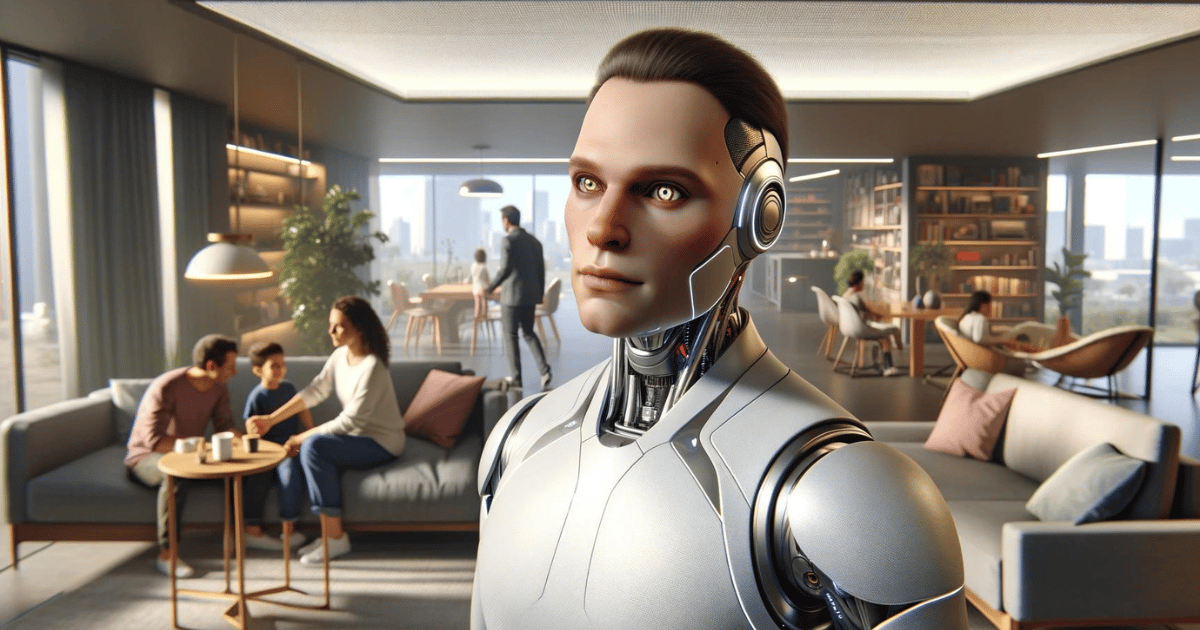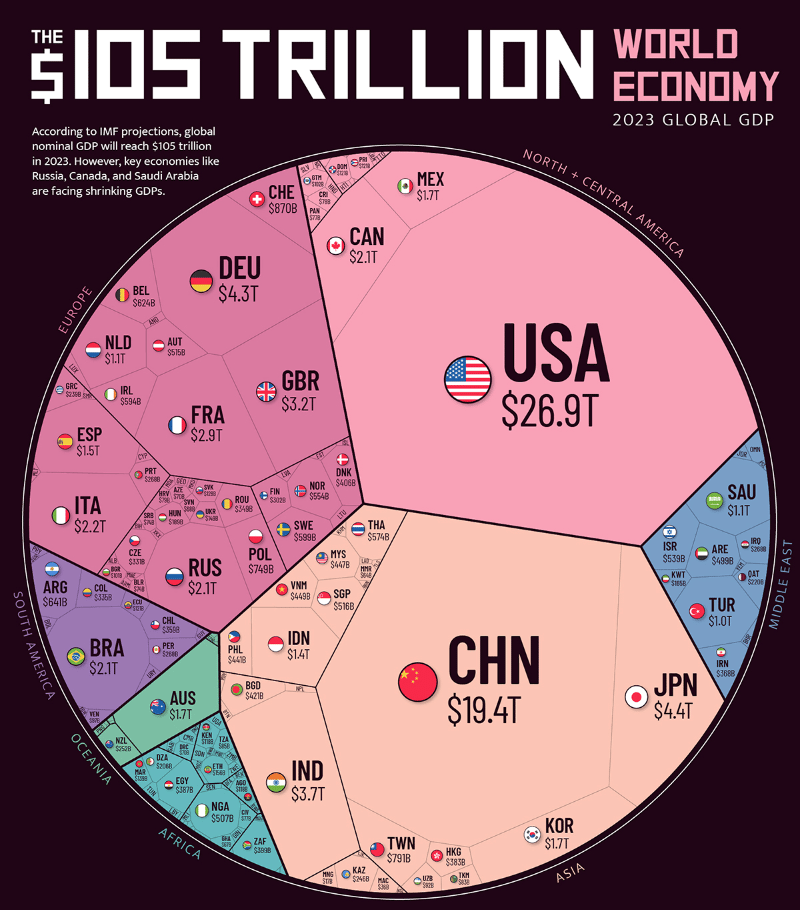- The Intelligence
- Posts
- Your personal AI robot is a reality now 👨🏼💻🦾 Week 7
Your personal AI robot is a reality now 👨🏼💻🦾 Week 7

Your personal AI robot is a reality now 👨🏼💻🦾
Happy Monday!
You either hate or love Mondays. If you’re one of those people that hate Mondays we hope our newsletter makes yours a little better.
A few weeks ago we published a newsletter about humanoids maybe being one of the biggest narratives in AI in 2024, remember? Well this became reality way quicker than we thought. AI humanoids are already here and it’s crazy.
Let’s dive right in and if you’re one of those who hate the Mondays: good luck today!
Table of contents 📚
🦿See for yourself how AI humanoids behave 🦾
Sam Altman wants to raise $ 7 trillion dollars for his next idea 😳
Watermarks on AI generated images? ©️
Generating SEO content time consuming? Not anymore! ✨
Google launched their newest and most powerful AI yet 😤
Opensource AI powerhouse to rival all
Updates 📬
See for yourself how AI humanoids behave
1X, a company focused on creating intelligent androids for physical labor, has developed a system that learns motor behaviors end-to-end from vision using neural networks. What is a neural network? You might ask. A neural network is like a smart computer that learns to solve problems by looking at lots of examples and remembering patterns.
This system, deployed on their EVE robots for patrolling tasks in 2023, enables the androids to perform a wide range of actions autonomously, including driving, manipulating objects, and interacting socially, all controlled by a single vision-based neural network. The training process involves a high-quality, diverse dataset from 30 EVE robots to create a base model, which is then fine-tuned for specific tasks. This approach allows for rapid skill acquisition with minimal data collection and training time. 1X emphasizes the role of "Software 2.0 Engineers," who train the robots through data rather than traditional coding, significantly expanding the potential applications of their androids. The company is currently expanding its team, seeking AI researchers and android operators to further their mission of developing general-purpose physically embodied intelligence.
You can have a look at the humanoids right here.
Sam Altman wants to raise $ 7 trillion dollars for his next idea
OpenAI CEO Sam Altman is reportedly seeking trillions of dollars in investments to overhaul the global semiconductor industry. He aims to address the supply-and-demand problem with AI chips, which has been limiting OpenAI's growth. Altman's project would increase global chip-building capacity, and he is in talks with various investors, including the government of the United Arab Emirates. The endeavor could require between $5 trillion and $7 trillion in investment. This initiative is seen as crucial for economic competitiveness and to meet the increasing demand for AI infrastructure. Altman's previous chip endeavors and investments have been a subject of controversy, but he remains focused on this ambitious project.
For your reference the total world economy is about $ 100 trilion.

Watermarks on AI generated images?
OpenAI's DALL-E 3, an image generator, will add watermarks to image metadata in line with the standards from the Coalition for Content Provenance and Authenticity (C2PA). These watermarks will be visible in images generated on the ChatGPT website and the DALL-E 3 model's API. The watermarks will include both an invisible metadata component and a visible CR symbol in the top left corner of each image. They are designed to allow people to check the provenance of any image generated by OpenAI’s platforms. The watermarks will be added to still images, but not videos or text. OpenAI states that adding the watermark metadata to images will have a negligible effect on latency and will not affect the quality of the image generation. However, it will slightly increase image sizes for some tasks. The C2PA, which includes companies like Adobe and Microsoft, has been advocating for the use of these watermarks to identify the provenance of content and show if it was made by humans or with AI. While this is a step towards increasing the trustworthiness of digital information, OpenAI acknowledges that the metadata can be easily removed, and taking a screenshot omits the metadata. Nonetheless, they believe that adopting these methods for establishing provenance and encouraging users to recognize these signals are key to increasing the trustworthiness of digital information.
Meta, the company behind Facebook and Instagram, has announced a plan to label AI-generated content from other companies like OpenAI and Google. This decision is aimed at enhancing transparency on its platforms by informing users when the content they see is digitally synthesized media rather than an authentic photo or video. The move comes during a contentious US election year and is part of a larger effort within the tech industry to establish standards for labeling content created using generative AI models. The labeling initiative will expand Meta's existing practice of labeling content generated by its own AI tools to include images created by services from other companies. The technology for labeling AI-generated content will rely on invisible watermarks and metadata embedded in files. However, Meta admits that it will not be able to detect AI-generated content that was created without watermarks or metadata, such as images created with some open source AI image synthesis tools. This announcement is in line with the company's efforts to address the increasing volume of synthetic and hybrid content online and to foster industry-wide momentum for similar measures.
🗓️ Tool of the week 🛠️
For those of you that are SEO specialists or want to start with SEO for you own business, this tool will save you a lot of time when creating content for your website. It’s Frase.io. The platform offers various functionalities, including AI-generated content briefs, simplified SERP research, quick outline generation, AI-powered content creation, and collaboration tools for seamless teamwork. It also provides a topic model to assess content compared to competitors and identify relevant keywords. The platform aims to streamline the process of creating high-quality, SEO-optimized content that ranks well on Google.

More updates 📬
Google’s launched their newest and most powerful AI yet
Google has announced the retirement of its Google Bard initiative, transitioning to a new branding and technology called Gemini. This move introduces Gemini Ultra, Google's latest and most advanced large language model (LLM). Unlike its predecessors, Gemini Ultra will be a paid service, accessible through a new $20 Google One tier. This tier not only offers 2TB of storage and the full suite of Google One features but also integrates Gemini into Google Workspace applications such as Docs, Slides, Sheets, and Meet. Additionally, the Duet AI brand, previously associated with AI features in Workspace, will be absorbed into the Gemini ecosystem.
The launch of Gemini Ultra marks a significant step in Google's AI development, positioning it as a direct competitor to OpenAI's ChatGPT. Initially, Google introduced the Gemini Pro model, which was roughly on par with GPT-3.5. However, with the advent of GPT-4, Google aimed to elevate its offering, leading to the development of Gemini Ultra. This model is designed to excel across a broad spectrum of benchmarks, including text, image, audio, and video processing. Gemini Ultra 1.0, the flagship model, is touted for its ability to handle complex tasks with applications in coding, logical reasoning, nuanced instruction following, and creative collaboration. It is also a multi-model system, enabling interactions about images, among other capabilities. Access to Gemini Ultra 1.0 is exclusively available through the new Google One AI Premium plan, which, in addition to the advanced AI model, includes all benefits of the existing Google One Premium plan.
This strategic shift to Gemini and the introduction of Gemini Ultra underscore Google's commitment to advancing its AI technology and ecosystem. By integrating these advanced models into its products and services, Google aims to enhance the user experience and foster innovation among developers and businesses.
Opensource AI powerhouse to rival all
The new open-source language model, Smaug-72B, has been released by the startup Abacus AI and has claimed the top spot in the world of natural language processing (NLP). It is a fine-tuned version of Qwen-72B and has outperformed GPT-3.5 and Mistral Medium in several popular benchmarks. Smaug-72B also surpasses its predecessor, Qwen-72B, by a significant margin in many evaluations. It is the first and only open-source model to have an average score of more than 80 across all major LLM evaluations, according to the Hugging Face Open LLM leaderboard. While it still falls short of human-level performance, its release signifies the potential for open-source AI to rival the capabilities of Big Tech companies. The model excels in reasoning and math tasks and is available on Hugging Face.